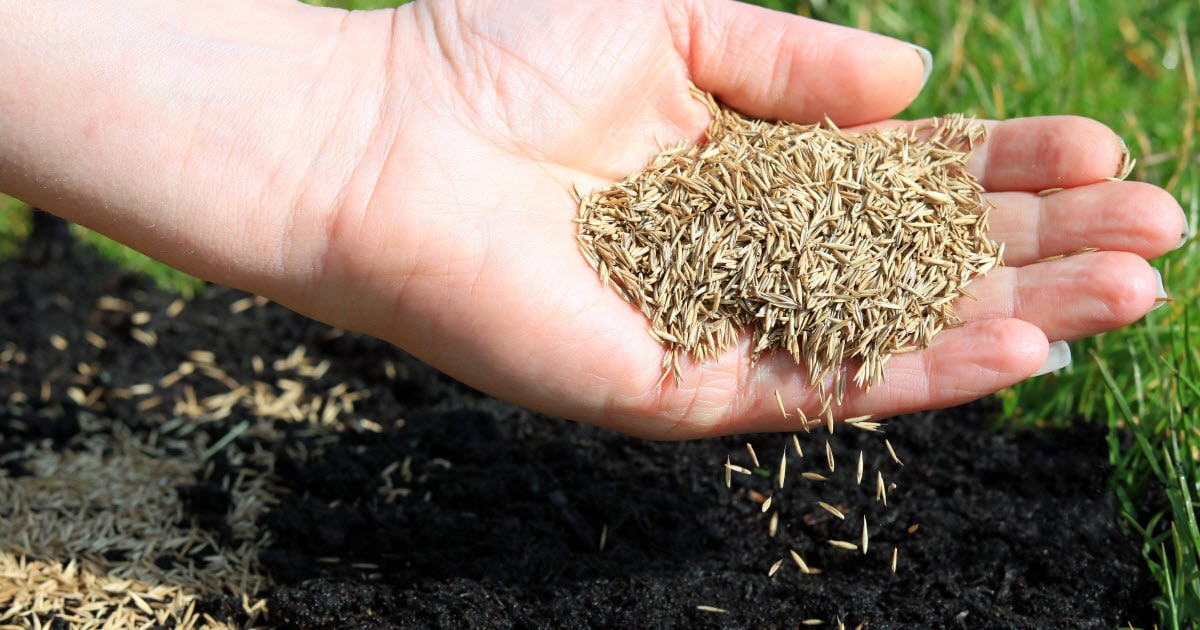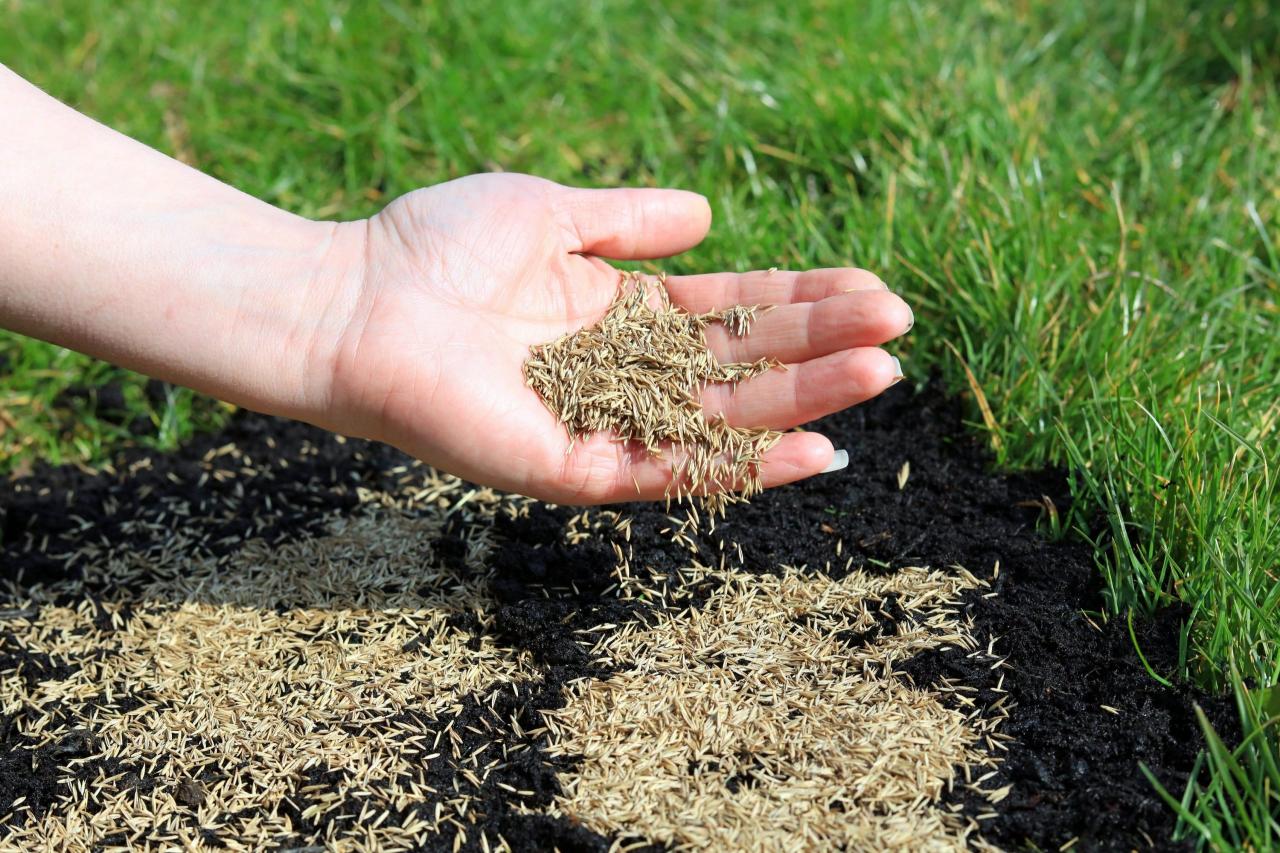The Top Tips for Timing Your Grass Seed Planting in the UK are crucial for achieving a lush, healthy lawn. Understanding the nuances of the UK climate, from its temperate conditions to the importance of soil moisture and drainage, is essential for successful germination.
The ideal timing for planting grass seed varies depending on the region, with spring and autumn offering distinct advantages and disadvantages. This guide will provide you with the knowledge and tools you need to plant your grass seed at the perfect time, ensuring optimal growth and a beautiful lawn for years to come.
By following these tips, you can set the stage for a thriving lawn that will enhance your outdoor space and provide a haven for relaxation and enjoyment. From preparing the soil to planting and aftercare, this guide will equip you with the knowledge and techniques necessary to achieve a flourishing lawn.
So, let’s delve into the art of timing your grass seed planting in the UK and unlock the secrets to a verdant landscape.
Understanding the UK Climate and Grass Seed Germination
The UK’s temperate climate, characterized by mild winters and warm summers, provides a favorable environment for grass seed germination. However, understanding the specific nuances of the UK climate and its impact on grass seed germination is crucial for achieving a lush and healthy lawn.
Optimal Temperature Range for Grass Seed Germination
The ideal temperature range for grass seed germination is between 15°C and 25°C (59°F and 77°F). This range allows the seeds to germinate quickly and efficiently. Temperatures below 10°C (50°F) can significantly slow down the germination process, while temperatures above 30°C (86°F) can inhibit germination or even damage the seeds.
Soil Moisture and Drainage, The Top Tips for Timing Your Grass Seed Planting in the UK
Maintaining adequate soil moisture is essential for successful grass seed germination. The seeds require consistent moisture to sprout and develop their root systems. However, excessive moisture can lead to waterlogging and hinder germination. Therefore, ensuring proper soil drainage is crucial.
- Good drainageallows excess water to escape, preventing waterlogging and creating an optimal environment for germination.
- Compacted soilcan impede drainage, leading to waterlogging and hindering germination.
Ideal Timing for Grass Seed Planting: The Top Tips For Timing Your Grass Seed Planting In The UK

The best time to plant grass seed in the UK depends on your location and the type of grass you are planting. Generally, spring and autumn offer the most favorable conditions for successful germination and establishment.
Spring Planting
Spring planting offers a window of opportunity from March to May. The soil is warming up, and there is ample moisture available for seed germination. This period allows the new grass to establish itself before the hot summer months arrive.
- Advantages: Warmer soil temperatures encourage faster germination and growth. Longer daylight hours provide more time for photosynthesis.
- Disadvantages: Competition from weeds can be more intense. Risk of drought conditions, especially in southern regions.
Autumn Planting
Autumn planting, typically from September to November, offers several advantages, particularly in the UK’s temperate climate.
- Advantages: Cooler temperatures and increased rainfall create ideal conditions for germination. Reduced weed competition due to cooler temperatures and shorter daylight hours. Winter frost helps to kill off weed seeds, giving the grass a head start in spring.
- Disadvantages: Slower germination and growth due to cooler temperatures. Risk of frost damage to newly established grass.
Planting Dates for Different Regions
The optimal planting dates can vary depending on the region in the UK. The following table provides a general guide:
Region |
Planting Dates |
|---|---|
Southern England |
March
Knowing when to plant grass seed is crucial for a lush, healthy lawn in the UK. While the best time to plant is often in the spring or autumn, there are other factors to consider like soil temperature and moisture levels. If you’re looking to enhance your culinary skills while you wait for your lawn to sprout, check out The Top Substitutes for Bay Leaves to Enhance Your Recipes for a range of flavorful alternatives. Back to your lawn, consistent watering and proper fertilization are essential for a thriving lawn.
|
Midlands |
April
|
Northern England and Scotland |
May
|
Preparing the Soil for Planting

A well-prepared soil is crucial for successful grass seed germination and establishment. It provides the ideal environment for roots to grow, absorb nutrients, and anchor the grass plants. This section will guide you through the essential steps involved in preparing your soil for planting grass seed.
Removing Weeds
Weeds compete with grass seedlings for water, nutrients, and sunlight, hindering their growth and establishment. Before planting, it is essential to remove existing weeds to give your grass seed the best chance of success.
- Manual Removal:For small areas, hand-pulling weeds is an effective method. Ensure you remove the entire root system to prevent regrowth.
- Herbicides:For larger areas or persistent weeds, consider using a selective herbicide specifically designed for lawns. Apply according to the manufacturer’s instructions to avoid damaging your future grass.
- Solarization:This method involves covering the soil with clear plastic sheeting for several weeks during the summer. The heat generated under the plastic kills weed seeds and other pests.
Aerating the Soil
Compacted soil restricts root growth and reduces water and air penetration. Aeration involves creating small holes in the soil to improve drainage, air circulation, and root growth.
- Core Aeration:This method uses a machine that removes small plugs of soil, improving drainage and aeration. It is best suited for established lawns but can also be used for preparing new lawns.
- Spike Aeration:This method uses a machine with spikes that penetrate the soil, creating small holes. It is less effective than core aeration but is suitable for lighter soils.
Leveling the Ground
An uneven surface can hinder the even distribution of grass seed and lead to patchy growth. Leveling the ground ensures consistent seed depth and promotes uniform germination.
- Rake:Use a garden rake to smooth out any bumps or depressions in the soil.
- Topsoil:Add topsoil to low areas to level the ground and create a consistent surface.
- Soil Compactor:Use a soil compactor to firm the soil after leveling, ensuring good seed-to-soil contact.
Soil Amendments and Fertilizers
Soil amendments and fertilizers can improve soil quality, providing essential nutrients for healthy grass growth.
- Compost:Incorporating compost into the soil adds organic matter, improves drainage, and enhances soil fertility.
- Lime:Applying lime to acidic soil increases pH levels, making it more suitable for grass growth. Consult a soil test to determine the appropriate amount of lime.
- Starter Fertilizer:A starter fertilizer containing nitrogen, phosphorus, and potassium provides essential nutrients for new grass seedlings.
Planting and Aftercare

Once you’ve prepared your soil, it’s time to plant your grass seed. Planting and aftercare are crucial for establishing a healthy lawn. Follow these steps for optimal results.
Planting Grass Seed
Planting grass seed involves spreading the seed evenly across the prepared soil. The depth and distribution of the seed are critical for successful germination.
- Choose the right seed type:Select a seed mix suitable for your climate and soil type. For example, if you live in a shady area, choose a shade-tolerant grass mix.
- Spread the seed evenly:Use a rotary spreader or a hand spreader to ensure consistent distribution of the seed. Follow the manufacturer’s instructions for the recommended seeding rate.
- Rake the seed in:Gently rake the seed into the soil to ensure good contact. This helps protect the seed from birds and wind.
- Water thoroughly:After planting, water the seed thoroughly to promote germination.
Seeding Depth and Distribution
The depth at which you plant your grass seed significantly impacts germination rates.
- Optimal depth:Aim for a depth of 1/4 to 1/2 inch.
- Too deep:If the seed is planted too deep, it may not have enough energy to reach the surface.
- Too shallow:If the seed is planted too shallow, it may dry out and fail to germinate.
Watering Techniques
Proper watering is crucial for the successful germination of grass seed.
- Consistent moisture:Keep the soil consistently moist but not soggy.
- Watering frequency:Water several times a day for the first few weeks, especially during hot weather.
- Avoid overwatering:Overwatering can lead to fungal diseases and root rot.
- Use a sprinkler:A sprinkler is ideal for providing even watering coverage.
Mowing and Fertilizing
Once the grass has reached a height of about 3 inches, it’s time to start mowing.
- First mow:Mow the grass at a higher setting, removing only about 1/3 of the grass blade.
- Regular mowing:Continue mowing regularly, adjusting the height as the grass grows.
- Fertilizing:After the first month, fertilize the lawn to encourage healthy growth. Follow the manufacturer’s instructions for the recommended amount and type of fertilizer.
Dealing with Common Challenges
Even with careful planning and execution, you might encounter challenges during grass seed germination. Knowing how to identify and address these problems can make a significant difference in the health and appearance of your lawn.
Weed Growth
Weeds can compete with your new grass for nutrients, sunlight, and water, hindering its growth.
When timing your grass seed planting in the UK, remember that the best time for germination is during the spring and autumn months. While you’re waiting for your lawn to flourish, why not try your luck at finding some good fortune by growing your own four-leaf clovers?
How to Find and Grow Four Leaf Clovers for Maximum Good Fortune offers some helpful tips on cultivating these lucky charms. Once your lawn is established, you can enjoy the beauty of your green space and maybe even find a few lucky clovers to bring you good fortune.
- Pre-emergent herbicides: These prevent weed seeds from germinating. Apply before you sow your grass seed, following the manufacturer’s instructions.
- Post-emergent herbicides: These kill weeds that have already emerged. Choose a product that is safe for young grass and apply according to the label instructions.
- Hand weeding: This is a labor-intensive but effective method for small weed infestations.
Pests
Insects like grubs, chinch bugs, and armyworms can damage your lawn.
- Identify the pest: Observe your lawn for signs of damage, such as wilting, brown patches, or holes in the grass.
- Use appropriate pest control: Contact a local gardening expert or pest control professional for advice on the most effective methods.
- Encourage beneficial insects: Create a habitat for beneficial insects like ladybugs and lacewings, which prey on harmful pests.
Disease
Fungal diseases can cause brown patches, yellowing, or other discoloration in your lawn.
- Proper watering: Overwatering can lead to fungal diseases. Water deeply but infrequently, allowing the soil to dry out slightly between waterings.
- Good air circulation: Ensure your lawn has adequate air circulation to prevent fungal growth.
- Fungicides: If a fungal disease is present, use a fungicide according to the manufacturer’s instructions.
Ending Remarks
Planting grass seed in the UK requires careful consideration of the climate, soil conditions, and the specific time of year. By understanding the optimal timing for planting, preparing the soil appropriately, and providing adequate aftercare, you can cultivate a beautiful and healthy lawn that will be the envy of your neighbors.
From choosing the right seed to watering techniques and dealing with common challenges, this guide has provided you with the essential knowledge and tools to achieve success. So, go forth and plant your grass seed with confidence, knowing that you have the knowledge and skills to create a stunning lawn that will bring joy and beauty to your outdoor space for years to come.
Clarifying Questions
What are the best types of grass seed for the UK climate?
The best types of grass seed for the UK climate depend on your specific needs and preferences. Some popular choices include:
– Perennial Ryegrass:A fast-growing, durable grass that is suitable for most UK lawns.
– Festuca:A drought-tolerant grass that is well-suited for sunny locations.
– Creeping Red Fescue:A fine-leaved grass that is ideal for shady areas.
– Bentgrass:A high-quality grass that is often used on golf courses and other high-maintenance lawns.
How deep should I plant grass seed?
The recommended planting depth for grass seed is about 1/4 inch (6 mm). You can use a rake to lightly cover the seed with soil.
How often should I water newly planted grass seed?
Newly planted grass seed needs consistent moisture to germinate and establish. Aim to water 2-3 times per day, ensuring the soil is consistently moist but not waterlogged.
